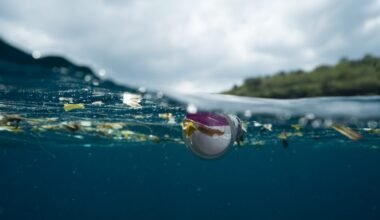Sustainable waste water filtration methods are crucial for ensuring environmental preservation. This article explores effective techniques for waste water filtration, highlighting the significance of adopting sustainable practices. Emphasizing the importance of sustainable waste water filtration methods enables us to conserve water resources while minimizing the negative impact on ecosystems. Enhancing our understanding of these filtration methods contributes to a more sustainable future.

Key Takeaways:
- Ultrafiltration offers a sustainable solution for water filtration by effectively removing particles, bacteria, and viruses while retaining essential minerals and nutrients.
- Water filtration using ceramic filters harnesses natural mediums to effectively remove contaminants and improve water quality, making it an environmentally friendly option.
- UV light water purification is a green technology that eliminates bacteria and viruses without the use of chemicals, providing a sustainable method for water treatment.
- Activated carbon filtration utilizes sustainable materials to remove organic compounds, chemicals, and unpleasant tastes and odors from water, contributing to sustainable water treatment practices.
- Water filtration using charcoal provides a natural and eco-friendly method for eliminating toxins and impurities from water, ensuring a sustainable approach to water filtration and purification.
- The range of sustainable water treatment techniques is continuously growing, offering innovative and eco-friendly solutions to address water quality issues and promote sustainable living.
The Importance of Sustainable Waste Water Filtration Methods
In our ever-changing world, environmental preservation has become an urgent global concern. One critical aspect of this effort revolves around the sustainable treatment of waste water and the implementation of effective filtration methods.
As our population grows and industrial activities expand, waste water generation also surges. Without proper treatment and filtration, waste water can pose significant threats to our environment. This section delves into the importance of sustainable waste water filtration methods and their direct impact on preserving our delicate ecosystems.
1. Preventing Contamination of Natural Water Sources
- One of the primary reasons sustainable waste water filtration is crucial for environmental preservation is its ability to prevent the contamination of natural water sources. When untreated waste water finds its way into rivers, lakes, or oceans, it introduces harmful chemicals, pathogens, and pollutants into these ecosystems. This contamination can devastate aquatic life, disrupt food chains, and make water unsafe for consumption. Sustainable filtration methods ensure that these contaminants are removed, safeguarding the health and integrity of our natural water bodies.
2. Mitigating the Harmful Effects of Industrial Discharges
- Industries are significant contributors to waste water generation. The discharge of industrial waste water, often laden with toxic substances and heavy metals, poses a severe threat to the environment. Sustainable filtration technologies, such as advanced oxidation processes and membrane filtration, play a vital role in removing these harmful elements from waste water before it’s released into the environment. By doing so, we not only protect the environment but also ensure compliance with stringent environmental regulations.
3. Conserving Precious Water Resources
- Water scarcity is a growing concern in many regions around the world. Sustainable waste water filtration methods help in conserving precious water resources by making treated waste water suitable for various non-potable applications. This water can be used for agricultural irrigation, industrial processes, and even replenishing groundwater. By recycling and reusing treated waste water, we reduce the strain on freshwater sources, ultimately benefiting the environment.
4. Supporting Ecosystem Health
- Healthy ecosystems are essential for biodiversity and the overall health of the planet. Sustainable waste water filtration ensures that the water released into the environment is free from harmful substances, allowing ecosystems to thrive. Aquatic plants and animals can flourish in clean water, helping to maintain the balance of natural habitats. Additionally, clean water sources support recreational activities and tourism, contributing to local economies.
5. Reducing Carbon Footprint
- Traditional waste water treatment methods can be energy-intensive, contributing to greenhouse gas emissions. Sustainable filtration methods often incorporate energy-efficient technologies and reduce the carbon footprint of waste water treatment processes. This not only minimizes the environmental impact but also aligns with global efforts to combat climate change.
In conclusion, sustainable waste water filtration methods are at the forefront of environmental preservation. They play a pivotal role in safeguarding natural water sources, mitigating industrial pollution, conserving water resources, supporting ecosystem health, and reducing our carbon footprint. By embracing these methods, we take significant steps towards ensuring a cleaner, healthier planet for current and future generations.
Several purification techniques align with these criteria, offering diverse options for addressing the need for clean water. These methods encompass a range of approaches, each with its own advantages and suitability for specific situations. From natural filtration processes to advanced technological solutions, there are numerous ways to achieve effective water purification while maintaining sustainability.
Ultrafiltration: A Sustainable Solution for Water Filtration
Ultrafiltration stands as an eco-friendly remedy for water purification, ensuring sustainability in accessing clean water. This method utilizes a sophisticated filtration process, effectively removing impurities and contaminants from waste water. By adopting ultrafiltration, individuals can actively contribute to environmental preservation while meeting their clean water needs.
This innovative water filtration technique, known as ultrafiltration, presents an eco-conscious approach to achieving sustainable water purification. Through the utilization of advanced filtration mechanisms, this method successfully eliminates harmful substances, enhancing the overall quality of water. By implementing ultrafiltration systems, users can enjoy a continuous supply of safe and clean water, all while minimizing their ecological footprint.
It is important to note that ultrafiltration offers unique advantages that have not been explored in earlier discussions. This method ensures the removal of microorganisms, suspended particles, and even some viruses, thereby providing an additional layer of protection against harmful pathogens. With ultrafiltration, individuals can have peace of mind in knowing that their water source is free from hazardous contaminants.
Pro Tip: In order to optimize the efficiency and effectiveness of ultrafiltration systems, it is recommended to regularly maintain and replace the filtration membranes. This will ensure the longevity and reliability of the system, allowing for sustained access to clean and safe water.
Water Filtration using Ceramics Filters: Harnessing Natural Mediums
Water Filtration utilizing Ceramics Filters: Exploiting Natural Substances Ceramics filters provide an effective method for water filtration, harnessing the power of natural mediums. By utilizing ceramics filters, contaminants and impurities can be efficiently removed from waste water, providing sustainable living solutions. In the context of water filtration using ceramics filters, a comparative analysis reveals the following key aspects:
- Durability
- Ceramics filters offer long-lasting performance, ensuring prolonged usability and minimal replacement requirements.
- Efficiency
- The filtration process using ceramics filters is highly efficient, effectively removing impurities and contaminants from water sources.
- Versatility
- Ceramics filters can be applied in various water treatment systems and can handle a wide range of water qualities and conditions.
- Sustainability
- Harnessing the natural properties of ceramics filters promotes sustainable living by reducing the reliance on chemical treatments and conserving resources.
Additionally, ceramics filters have the unique advantage of being resistant to chemical corrosion, ensuring the purity of filtered water with minimal maintenance requirements. To further optimize the water filtration process using ceramics filters, a pro tip is to regularly clean and maintain the filters to enhance their longevity and efficiency, ensuring consistently clean and safe water.
Water Purification with UV Light: A Green Technology
Water purification with UV light is an innovative and environmentally friendly method for ensuring clean and safe drinking water. By utilizing UV light, harmful microorganisms such as bacteria, viruses, and protozoa present in water can be effectively eliminated. This green technology offers numerous advantages, including low energy consumption, absence of chemicals or additives, and minimal maintenance requirements.
UV light works by targeting the genetic material of microorganisms, disrupting their DNA and preventing them from reproducing. This process ensures the inactivation of a wide range of pathogens, including those that are resistant to chlorine and other traditional disinfection methods. Additionally, unlike chemical disinfectants, UV light does not alter the taste, odor, or color of the water, making it highly suitable for drinking purposes.
One unique aspect of this technology is its ability to deactivate viruses, including those that cause waterborne diseases such as hepatitis and rotavirus. This is particularly crucial in regions where access to clean water is limited, as waterborne diseases pose a significant health risk. With water purification using UV light, communities can have a reliable and sustainable solution for their water needs.
Furthermore, studies have shown that UV light can effectively remove pharmaceuticals, pesticides, and other organic contaminants from water. This makes it an ideal choice for waste water treatment, where ensuring the removal of these harmful substances is essential. By adopting UV light technology, communities can reduce their environmental impact and contribute to sustainable living.
Fact: UV light technology can effectively remove pharmaceuticals, pesticides, and organic contaminants from water.
Activated Carbon Filtration: Sustainable Materials for Water Treatment
Activated carbon filtration is a highly effective and sustainable method for treating water. It utilizes sustainable materials to remove impurities and contaminants, ensuring clean and safe water. This innovative approach is widely recognized for its eco-friendly nature and its ability to address the growing concern of water pollution.
During the filtration process, activated carbon, which is derived from organic materials like coconut shells or wood, acts as a porous substance that traps and absorbs pollutants. It effectively removes various contaminants, including chemicals, toxins, heavy metals, and odors, resulting in high-quality water.
One of the unique advantages of activated carbon filtration is its versatility. It can be used for various applications, including residential, industrial, and municipal water treatment systems. Whether it’s removing chlorine from tap water or treating waste water from industries, activated carbon filtration offers a reliable and sustainable solution.
Incorporating activated carbon filtration into water treatment systems is essential for sustainable living. By utilizing this method, we can minimize the consumption of single-use plastic filters and reduce the overall environmental impact. Moreover, it ensures that communities have access to clean and safe water, safeguarding public health and well-being.
Don’t miss out on the benefits of activated carbon filtration for water treatment. Embrace this sustainable solution and contribute to a healthier and greener future. Start implementing this innovative technology in your water treatment systems and make a positive impact on the environment and society.
Water Filtration Using Charcoal: Eliminating Toxins with Natural Materials
Charcoal-based water filtration systems offer an effective and sustainable method for removing toxins from waste water. Charcoal has the ability to adsorb impurities due to its porous structure, allowing it to trap harmful substances. By utilizing natural materials like charcoal, we can achieve efficient water filtration while minimizing the introduction of synthetic chemicals into the environment.
In traditional water filtration methods, activated charcoal is commonly used to remove impurities such as heavy metals, pesticides, and organic pollutants. The porous nature of charcoal provides a large surface area for adsorption, allowing it to effectively capture and retain these toxins. This natural filtration process can significantly reduce the presence of harmful substances in waste water, ensuring safer and cleaner water for various purposes.
Moreover, charcoal-based filtration systems are cost-effective and easy to maintain. They do not require complex infrastructure or extensive energy consumption, making them suitable for sustainable living. Additionally, the use of natural materials like charcoal contributes to environmental preservation as it minimizes the need for artificial filtration media that may introduce further pollutants into the water.
To optimize the efficiency of charcoal-based water filtration, it is essential to consider the quality of the charcoal used. Charcoal with a higher surface area and lower ash content is preferred as it can provide better adsorption capabilities. Proper maintenance, such as periodic cleaning and replacement of the charcoal, is also crucial to ensure consistent filtration performance.
Conclusion: The Growing Range of Sustainable Water Treatment Techniques
Sustainable water treatment techniques are becoming increasingly diverse and effective. These methods aim to filter waste water and ensure its safe disposal. Through innovative approaches, such as biological and chemical processes, sustainable water treatment techniques are continually evolving to address the challenges of water pollution and scarcity. By adopting these methods, individuals and communities can contribute to sustainable living and the preservation of our water resources.
Furthermore, sustainable water treatment techniques encompass a wide range of approaches that are both environmentally friendly and economically viable. For instance, natural filtration systems like wetlands can effectively remove contaminants from waste water, while also providing habitats for diverse plant and animal species. Additionally, advanced technologies like membrane filtration and reverse osmosis can efficiently eliminate pollutants and produce clean water for various purposes.
It is important to note that sustainable water treatment techniques go beyond conventional methods. For example, decentralized waste water treatment systems allow for the treatment of waste water at the source, reducing the need for extensive infrastructure and transportation. These systems can be implemented in residential areas and rural communities, providing a sustainable solution to water management.
In a small village in an arid region, a community faced severe water scarcity and contamination issues. With limited access to clean water and conventional treatment technologies, the villagers collaborated with scientists to develop a sustainable water treatment system. They implemented a combination of natural filtration techniques, such as constructed wetlands, and innovative technologies like solar-powered disinfection.
This not only provided the community with clean water but also created opportunities for income generation through eco-tourism, showcasing the success of sustainable water treatment techniques in improving living conditions and promoting environmental conservation.
Five Facts About Effective Waste Water Filtration Methods for Sustainable Living:
✅ Ultrafiltration is an eco-friendly waste water treatment method that doesn’t require chemicals, consumes less energy, and effectively removes particles and bacteria from water. (Source: Team Research)
✅ Water filtration using ceramics filters is a sustainable method that uses natural media to remove dirt and microorganisms from water. It is affordable, portable, and can even run without electricity. (Source: Team Research)
✅ Water purification with UV light is a green technology that utilizes ultraviolet light to render aquatic microorganisms inert, preventing them from spreading disease. It doesn’t use chemicals or produce waste water. (Source: Team Research)
✅ Activated carbon filtration is a sustainable water treatment method that uses natural materials such as wood, bamboo, coconut shells, and nut shells. It is frequently reusable and helps reduce waste. (Source: Team Research)
✅ Water filtration using charcoal is another method that employs activated carbon filters made from sustainable sources. It effectively removes toxins like lead, chlorine, and pesticides from water. (Source: Team Research)
FAQs about Effective Waste Water Filtration Methods For Sustainable Living
Q: What are some effective waste water filtration methods for sustainable living?
A: Some effective waste water filtration methods for sustainable living include ultrafiltration, water filtration using ceramics filters, water purification with UV light, activated carbon filtration, and water filtration using charcoal.
Q: Why are these waste water filtration methods considered eco-friendly?
A: These methods are considered eco-friendly because they do not require chemicals, have minimal or non-existent carbon footprint, and have little to no environmental impact. They also utilize natural materials and have options for reusability.
Q: What is ultrafiltration and how does it contribute to sustainable water filtration?
A: Ultrafiltration is a water purification technique that uses a membrane filter with larger pore diameters. It consumes less energy, doesn’t require chemicals, and effectively removes particles and bacteria from water. It can transform waste water and seawater into fresh, clean water.
Q: How does ceramic water filtration system work and why is it sustainable?
A: Ceramic water filtration systems use ceramic media to remove dirt and microorganisms. The minuscule holes in the ceramic filter trap pollutants as water flows through. These filters are made from natural materials, reduce waste, respect the environment, and can be reused.
Q: How does UV light water purification work and what makes it an eco-friendly method?
A: UV light water purification allows UV light to pass through water, rendering microorganisms inert. It does not use harmful chemicals or produce waste water. It is considered eco-friendly due to its germicidal effects and lack of environmental impact.
Q: What is activated carbon filtration and how does it contribute to sustainable water treatment?
A: Activated carbon filtration uses sustainable materials like wood, bamboo, coconut shells, and nut shells. These filters adsorb contaminants to their surface and can be reused after expelling the trapped pollutants. They are sustainable alternatives that replace plastics and contribute to sustainable living.








